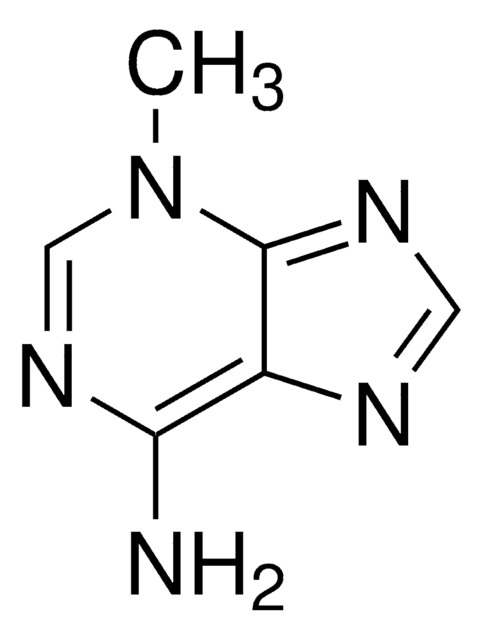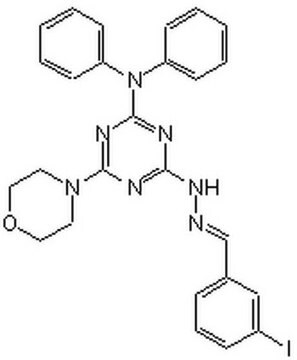SML1661
Bafilomycin A1
from Streptomyces griseus, ≥90% (HPLC), DMSO solution, V-ATPase inhibitor
Sinonimo/i:
BafA1
About This Item
Prodotti consigliati
product name
Bafilomycin A1 Ready Made Solution, 0.16 mM in DMSO, from Streptomyces griseus
Origine biologica
Streptomyces griseus
Livello qualitativo
Forma fisica
DMSO solution
Concentrazione
0.16 mM in DMSO
Condizioni di spedizione
dry ice
Temperatura di conservazione
−20°C
InChI
1S/C35H58O9/c1-19(2)32-24(7)27(36)18-35(40,44-32)26(9)31(38)25(8)33-28(41-10)14-12-13-20(3)15-22(5)30(37)23(6)16-21(4)17-29(42-11)34(39)43-33/h12-14,16-17,19,22-28,30-33,36-38,40H,15,18H2,1-11H3/b14-12+,20-13+,21-16+,29-17-/t22-,23+,24-,25-,26-,27+,28-,30-,31+,32+,33+,35+/m0/s1
XDHNQDDQEHDUTM-JQWOJBOSSA-N
Descrizione generale
Applicazioni
- as an endosome acidification inhibitor to study the importance of endosome acidification in the extracellular vesicle uptake and cytosolic release of stably expressing NanoLuc luciferase-tagged Hsp70 (NLuc-Hsp70) in HeLa cells
- as a vacuolar-type H+-ATPase (V-ATPase) inhibitor to study its effects on autophagic turnover of light chain 3 β (LC3-II) in mice
- as an autophagy inhibitor to study its effects on primary rat liver sinusoidal endothelial cells (LSECs) defenestration
Azioni biochim/fisiol
Altre note
Codice della classe di stoccaggio
10 - Combustible liquids
Classe di pericolosità dell'acqua (WGK)
WGK 1
Punto d’infiammabilità (°F)
188.6 °F - closed cup
Punto d’infiammabilità (°C)
87 °C - closed cup
Certificati d'analisi (COA)
Cerca il Certificati d'analisi (COA) digitando il numero di lotto/batch corrispondente. I numeri di lotto o di batch sono stampati sull'etichetta dei prodotti dopo la parola ‘Lotto’ o ‘Batch’.
Possiedi già questo prodotto?
I documenti relativi ai prodotti acquistati recentemente sono disponibili nell’Archivio dei documenti.
I clienti hanno visto anche
Il team dei nostri ricercatori vanta grande esperienza in tutte le aree della ricerca quali Life Science, scienza dei materiali, sintesi chimica, cromatografia, discipline analitiche, ecc..
Contatta l'Assistenza Tecnica.













